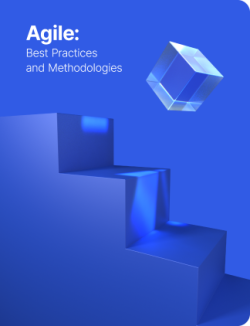Agile Release Train
What is the agile release train?
Agile release train definition
The agile release train (ART) is the name given to a development team that is made up of multiple agile teams. Each team is responsible for a specific set of tasks, and are all aligned with the same vision that will feed into the final product.
How do agile release trains fit into the SAFe framework?
As agile businesses grow, they need to find a way to scale their development process while still maintaining agile principles. Agile release trains are crucial to businesses using the SAFe framework. They’re used to coordinate each team in a way that essentially creates one giant, cross-functional unit. This allows a company to embrace agile methodologies with small teams working on features, while still working on a large project.
Why are agile release trains important?
Agile release trains serve to make the development progress streamlined and stress-free, even with huge projects. The ART helps increase the visibility of overall project progress by combining the efforts of each team into a single, clear display. This helps the team maintain alignment and focus, while also allowing stakeholders to get an easy update on how the overall project is going. This also helps the different teams collaborate better because they can easily see the progress of other tasks and other teams.
All of this means the project is working as efficiently as possible with a much lower risk of project failure. Each team is a functional part of the overall project with no silos to hamper collaboration. This means complete alignment and much higher quality output compared to businesses not using ART.
Principles of the agile release train
As with any agile methodology, the agile release train follows a stringent set of principles to ensure its effectiveness.
Fixed and synchronized schedule
While most agile practices avoid setting solid deadlines, agile release trains run on a tight, fixed schedule to increase focus, all teams are then synced to this. The schedule is determined by the Program Increment (PI) and typically lasts 12 weeks.
Two-week cycles
Much like Agile teams work in two-week sprints, the agile release train runs on a two-week cycle, referred to as system increments.
Known velocity
The velocity is decided based on data from previous projects to allow for a reasonable expectation to be set for each cycle.
Develop on cadence, release on demand
While teams are working towards deadlines, the release date is not confirmed until the product is complete. This ensures customers are getting maximum value from day one.
PI planning
Teams will meet before getting started to plan and determine strategic objectives for the upcoming program increment.
Innovation and planning
At the end of a PI, the agile release train meets for an innovation and planning event to discuss PI planning, continuing education, and assess current infrastructure.
Inspect and adapt
Finally, teams meet for an inspect and adapt event at the end of a PI. This is similar to a sprint retrospective.

Glossary categories
Experience the new way of doing product management

Experience the new way of doing product management








